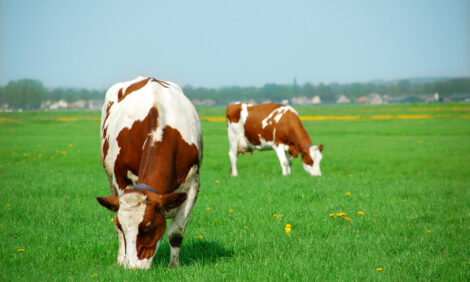



Positives of Climate Change? Research Shows Ag, Economic Possibilities
US - Depending on your side of the aisle, climate change either elicits doomsday anxiety or unabashed skepticism. Jason Hubbart, director of Institute of Water Security and Science at West Virginia University, takes a more centered approach.He's studied the undisputable changing patterns in West Virginia's climate. And, believe it or not, there is at least one silver lining stemming from changing climate, he insists: The growing season is getting longer.
"Our future climates in West Virginia are likely to be more conducive to agricultural production," said Hubbart, a professor of hydrology and water quality in the Davis College of Agriculture, Natural Resources and Design. "We should plan for that now."
In research published in Regional Environmental Change, and the journals Water and Climate, Hubbart found that, between 1900 and 2016, maximum temperatures in West Virginia trended downward, average minimum temperatures ascended and annual precipitation increased. Specifically, precipitation increased about an inch each of the last few decades.
In other words, West Virginians are now, on average, seeing cooler summers, warmer winters and wetter weather.
Corresponding with those trends, big changes have occurred in agriculture. Yield for hay and corn, which have historically been bread-and-butter resources for the state, have increased, yet 23 percent slower than the national average; however, other crops, including winter wheat and soybeans, have increased yields 15 percent faster than the national average.
Based on his findings, "it's time to rethink farming in West Virginia," said Hubbart, who grew up on a 2,000-acre dairy farm near Spokane, Washington.
Hubbart breaks down why traditional West Virginia crops are floundering while others, previously not prominent, have gained potential.
"Some areas of West Virginia are too drenched or flooded all the time," he said. "Because it's wetter, we've seen a decline in crops like hay and corn."
An uptick in humidity - a result of climate change in many regions - plays a part in the dwindling performance of traditional West Virginia crops. More humidity lowers vapor-pressure deficit, which is the difference between the amount of moisture in the air and how much moisture the air can hold (i.e. saturation).
When the air is saturated, water can condense out to form clouds, turn into precipitation and create dew or films of water over a plant's leaves. More importantly, when the air is saturated (approaching 100 percent humidity), plants have a much more difficult time transpiring (moving water from the leaf to atmosphere). Therefore, the plants also have difficulty staying cool, transporting nutrients and photosynthesizing. For many historic agricultural crops, future climates may result in lower productivity.
Corn and alfalfa, for instance, need a lot of water. Those plants use energy to create sugars and biomass. If it gets too hot, productivity can slow because they cannot move water up the plant and out the stomates, Hubbart explained. Ultimately, though West Virginia is seeing more precipitation, the increased humidity slows the movement of water from the plant to the atmosphere.
Yet that doesn't mean death to West Virginia agriculture. Crops that don't require as much water (through transpiration), or thrive in short winters, long summers or moderate temperatures, could help turn the state around, Hubbart believes.
The winter season has shrunk by as much as 20 days, according to Hubbart's research, and the minimum (and winter) temperatures have become warmer. The growing season itself has increased by approximately 13 days.
"Winter wheat and soy bean crops are just a couple of examples of future agricultural investment," Hubbart said. "Those crops, and many broadleafs do well in short winters. Basil, specialty teas, specialty vegetables, those are plants that have had trouble growing here historically, but now, and in the future, they may fare better.
"We can diversify our crops more. West Virginia should be thinking strategically about which crops to grow in what locations."
Outcomes in his research also suggest the possibility of double-cropping, meaning that the growing seasons are extending long enough to raise one crop and harvest it and then raise another crop and harvest it, too, within the same year.
"Doing that, obviously, increases economic revenue and provides local food supplies that could greatly improve access to fresh vegetables to our citizens," Hubbart said. "That's more than just a bit of good news."
Hubbart's findings come from more than 90 years' worth of observed weather data from climate stations on the ground throughout West Virginia and Appalachia. Whereas some research relies on climate models utilizing information from more distant locations and predictions based on those models that often aren't accurate, these findings are based on actual observed long-term West Virginia data, he said.
While other climate research predicts drier climates and the emergence of food deserts, Hubbart's research indicates quite the opposite.
"West Virginia is a beautiful state with so much to look forward to," he said. "Our great scientists are making incredible progress in agriculture, food deserts, agricultural economics, etc. We need to celebrate our current successes and how we can use those successes in what I view as a very bright agricultural future for our state."
"My results indicate that future climates will facilitate higher productivity and new crops, both of which could create an economic boom for West Virginia, reduce food desert issues and broadly improve the human condition in our state."
TheCattleSite News Desk


